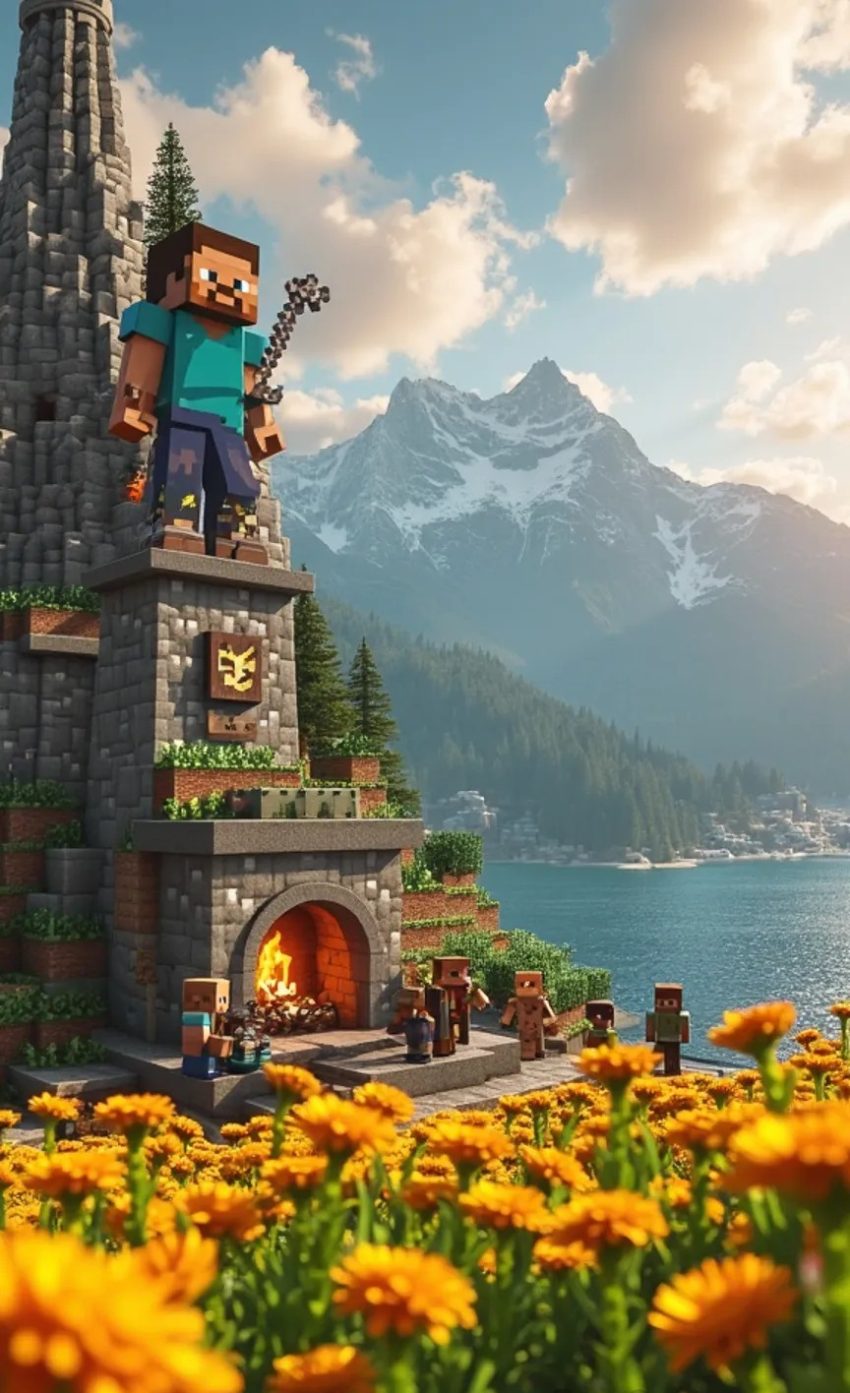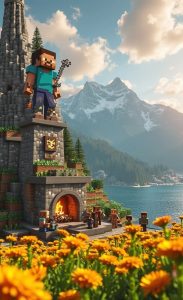Introduction
Minecraft, developed by Mojang Studios and officially released in 2011, is more than just a video game — it’s a cultural phenomenon. With its pixelated graphics and sandbox-style gameplay, game has captured the hearts of millions of players across the globe. Whether you’re a casual player or a professional builder, game offers endless possibilities that encourage creativity, exploration, and collaboration.
The Gameplay Experience
At its core, Minecraft is a sandbox game that allows players to build and explore virtual worlds made of blocks. There are several game modes to choose from:
-
Survival Mode: Players must gather resources, build shelter, and fend off monsters like zombies and skeletons. It’s all about survival and strategy.
-
Creative Mode: This mode offers unlimited resources and the freedom to build anything you can imagine — from simple houses to entire cities.
-
Adventure Mode: Designed for custom maps and challenges, this mode adds a layer of storytelling to the gameplay.
-
Spectator Mode: Allows players to freely explore the world without interacting with it.
Why Is Minecraft So Popular?
One of the key reasons Minecraft remains popular is its versatility. Here are a few reasons why millions of players keep coming back:
-
Creativity: The game is like digital LEGO. You can build castles, roller coasters, monuments, and even functioning computers using Redstone.
-
Education: game is widely used in schools to teach subjects like math, history, and computer science. It helps develop problem-solving and teamwork skills.
-
Community: The game community is massive and highly active. Players create mods, share worlds, and collaborate on giant projects.
-
Updates and Mods: Regular updates keep the game fresh, and mods created by fans add new gameplay elements, skins, and mechanics.
Minecraft: A Timeless Sandbox Adventure
game is more than just a game — it’s a cultural phenomenon. Released by Mojang in 2011, this iconic sandbox game allows players to shape their own worlds, mine resources, build structures, and survive in a randomly generated environment. Its simple blocky graphics hide a deep and endless potential for creativity.
Players can explore vast landscapes, from forests and deserts to oceans and caves, all made of cubes. With game modes like Survival, Creative, Hardcore, and Adventure, game offers something for everyone — whether you’re a builder, a fighter, or an explorer.
One of Minecraft’s greatest strengths is its modding community. Players can enhance the game with custom mods, new items, and even entire game mechanics. Multiplayer servers also allow players to collaborate or compete with others around the globe.
In education, Minecraft is even used to teach subjects like math, history, and programming. Its open-ended design fosters creativity, problem-solving, and imagination.
Whether you’re crafting your first shelter or building an entire city, Minecraft provides an experience that’s truly your own — and that’s why it remains one of the best-selling and most beloved games in history.
Minecraft and the Real World
Beyond gaming, Minecraft has had a big impact on real-world education and digital culture. Platforms like Minecraft Education Edition are used in classrooms worldwide, and many YouTubers and streamers have built entire careers playing Minecraft.
Additionally, game has inspired books, merchandise, toys, and even conventions like Minecon, where fans gather to celebrate the game.
Conclusion
Minecraft is more than just a game — it’s a platform for creativity, learning, and connection. Whether you enjoy surviving in a harsh world, building magnificent structures, or coding mini-games, Minecraft has something for everyone. Its simplicity, combined with endless depth, ensures that it will remain a favorite for generations to come.

